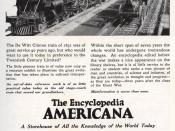HOW DOES IT WORK AND UNDER WHAT CIRCUMSTANCES?There are many different methods of aquaculture depending on the species, but, the main process behind aquaculture begins by choosing the organism for cultivating (Weise, 2008). Successful aquaculture takes into consideration the biology of the aquatic species like feeding and water flow, engineering design like water quality and aeration and the issues relating to any business (Weise, 2008). The species must meet a certain criteria to be cultured, including the fact that the organism must have hardy eggs and larvae must be sustainable, they must feed on cheap and easily available food, and they must grow rapidly for aquaculture to be productive (Tesar, 2008). Technological advances have alleviated some of these rules such as biotechnology where scientists have added genes for disease resistance and faster reproduction with bigger results by adding growth hormone genes into fish eggs (Encyclopedia Americana, 2008). Refer to Figure 2: Naturally occurring (left) and growth hormone genetically engineered (right) Coho salmon at 1 year of age at aquaculture farm.
Then, depending on the selected species, they can be raised in artificial or natural bodies of water (Weise, 2008). Artificial systems include raceways, tanks, pools, and cages made of non-toxic materials. (Tesar, 2008). Refer to Figure 3.
After, the species are placed in their selected environment; the organisms are farmed or produced (Encyclopedia Americana, 2008). Farmers have to decide on the method of cultivating the organism, such as breeding in which it is difficult to copy the environmental factors that trigger sexual maturity in aquatic animals to produce spawning (Grolier Multimedia Encyclopedia, 2008). Due to this, aquaculture farmers inject pituitary hormones or implant pituitary material from other animals of the same or related species into the aquatic animals to bring about spawning at the...


